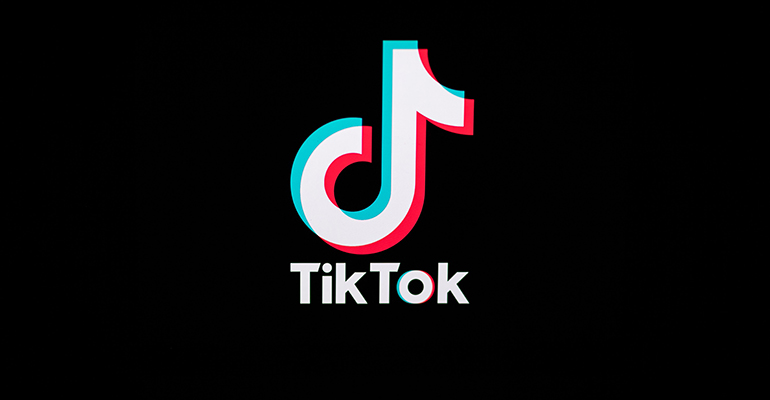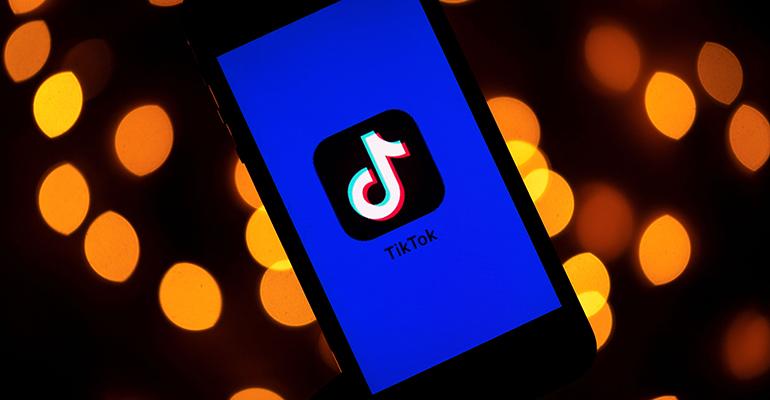TikTok, the social media app that allows users to create and share 15-second video clips, has taken over the internet. A favorite of Gen Z and investors alike, it was recently valued at $75 billion.
The app boasts 500 million monthly active users as of June 2018, and two-thirds of the app’s users are reported to be under 30 according to an analysis by the company.
This app could be good or bad news for restaurants depending on a brand’s ability to take charge of the narrative.
TikTok started out as a lip-synching app, but has slowly gained traction as a video-focused social media app.
TikTok users add special effects to give more performative value. It has become a marketplace for short videos where users can gain fame for acrobatic flips, “America’s Funniest Home Video”-style bloopers and short comedic performances.
There is less polish with TikTok than with other social media apps. The app doesn’t adhere to the same algorithms as Instagram where it can be hard to organically raise a personal or company profile. Here, information sharing is democratized, and a quick scroll through the app will provide access to videos ranging from 100,000 views to 16.
 “[Gen Z isn’t] just watching. They’re creating in response. You’re turning them into brand ambassadors without even doing any influencer marketing,” said Stefan Heinrich, director of U.S. marketing for TikTok, at the Cannes Lions Festival of Creativity, a gathering of those in the creative marketing industry.
“[Gen Z isn’t] just watching. They’re creating in response. You’re turning them into brand ambassadors without even doing any influencer marketing,” said Stefan Heinrich, director of U.S. marketing for TikTok, at the Cannes Lions Festival of Creativity, a gathering of those in the creative marketing industry.
A popular video style on the app utilizes slang that’s popular with Gen Z. For example, to “check” is when someone brags about their lifestlye. A “Karen” is an annoying older person, the type who demands to see the manger. Most videos focus on shared experiences like dealing with older generations and the daily struggles of teenage life.
Chipotle and its young fanbase have decided to capitalize on the platform in a way no other foodservice brand has yet to do—with an official TikTok account, which now boasts over 2 million likes and 212,000 followers.
Their TikTok tagline is “Less Tok, More Guac”.
For Halloween, Chipotle ran a promotion via TikTok where users could make a video using the hashtag #Boorito. The top five most-liked videos would receive free Chipotle for a year. The top video received over two million likes and the hashtag had over 3 billion views.
One video with over 24,000 views is a man with a towel on his head, pretending to be a mom, or “Karen” as Chipotle captions the video, where he lists the “annoying” things mothers are assumed to do in line at the chain. “Karen” is seen leaning over and knocking on the sneeze guard to get workers attention.
Previously, Chipotle participated in a paid marketing campaign on the app by working with influencer David Dobrik for the #ChipotleLidFlip challenge. The goal of the challenge was to flip the Chipotle container and land it just right, garnering over 100,000 submissions and 230 million views.
As one of the only global food brands to take the plunge into marketing via TikTok, Chipotle is simply serving their base customers, executives say.
“Almost half of our customer base is Gen Z or millennials, so social media is a fact of life. They just expect you to be in the places where they are,” said CMO Chris Brandt to Forbes.
Other initiatives by the chain include the #GuacDance challenge asking fans to show off their avocado-inspired dance moves. The challenge, with over 250,000 submissions and 450 million views in six days, led to Chipotle’s biggest guacamole day ever with more than 800,000 sides of guac served.
The #GuacDance is TikTok’s highest-performing branded challenge in the U.S. to date.
“When you can do something that engages your customers in a way they think is cool, interesting and new, and culturally relevant, people will flock to your brand. At the end of the day, we’re growing sales and transactions, and I would say there’s a correlation,” Brandt said in the Forbes interview.
Of course, like all social media platforms, there are downsides to this app.
Earlier this fall, several QSR chains had PR disasters when employees took to TikTok in an informal capacity.
A Panera Bread worker with the username @BriannaRaeLenee posted a now infamous video showing how the chain’s signature mac & cheese is made. She revealed it’s frozen and cooked in hot water, a typical reheating method that the public may not be familiar with.
In the video, she takes the plastic bag of frozen mac and cheese and places it in hot water then empties it into the bowl for service. The video is titled, “Exposing Panera” and it received 950,000 likes and over 11 million views. It also got the creator fired.
The former Panera worker made a follow-up video on TikTok defending the chain. In it she admitted that the mac & cheese and soups were frozen but added, “that does not mean they’re not good”.
She later went on to explain her termination and admitted it was justified in a Tweet. She cited an employee code violation as the reason for her firing rather than the video itself.
Panera did not return Nation’s Restaurant News’ request for comment, but they did comment to USA Today where they acknowledged the mac and cheese was frozen “to avoid using certain preservatives that do not meet our clean standards”.
Later that same month, Dunkin’ was “exposed” for their frozen products.
The poster, self-identified as Morgan, captioned the video “They can’t fire me if I’m quitting so here y’all go”.
The 15 second clip starts with a Dunkin’ worker’s uniform, for proof of employment, followed by shots of boxes of frozen donuts, muffins and bagels. The now private video also appeared to show frozen bacon and egg patties.
Within 24 hours the video went viral, garnering 350,000 likes on TikTok.
Dunkin’ did not return Nation’s Restaurant News’ request for comment.
In Australia, workers at local McDonald’s across the country are posting videos under the hashtag #maccascheck to show their daily lives working for the quick service giant.
McDonald’s is often referred to as Maccas in Australia while a TikTok “check” video is used to show off — in this case, ironically. Rather than showing off homes and cars, employees show life as a McDonald’s employee. The #maccascheck hashtag has more than one million combined view. The videos range from employees showing off the mundane tasks like loading a fryer and stacking boxes to playing pranks on one another during the workday.
The #maccascheck videos are certainly not exposing company secrets, but these videos are another example of how brands can lose control of their messaging.
TikTok is a way to directly answer, engage, and delight customers and fans. But like other social media platforms, it comes with risks and rewards and requires a bit of letting go. But for better or worse ignoring this new form of communication doesn’t seem to be an option.
Contact Holly at [email protected]





